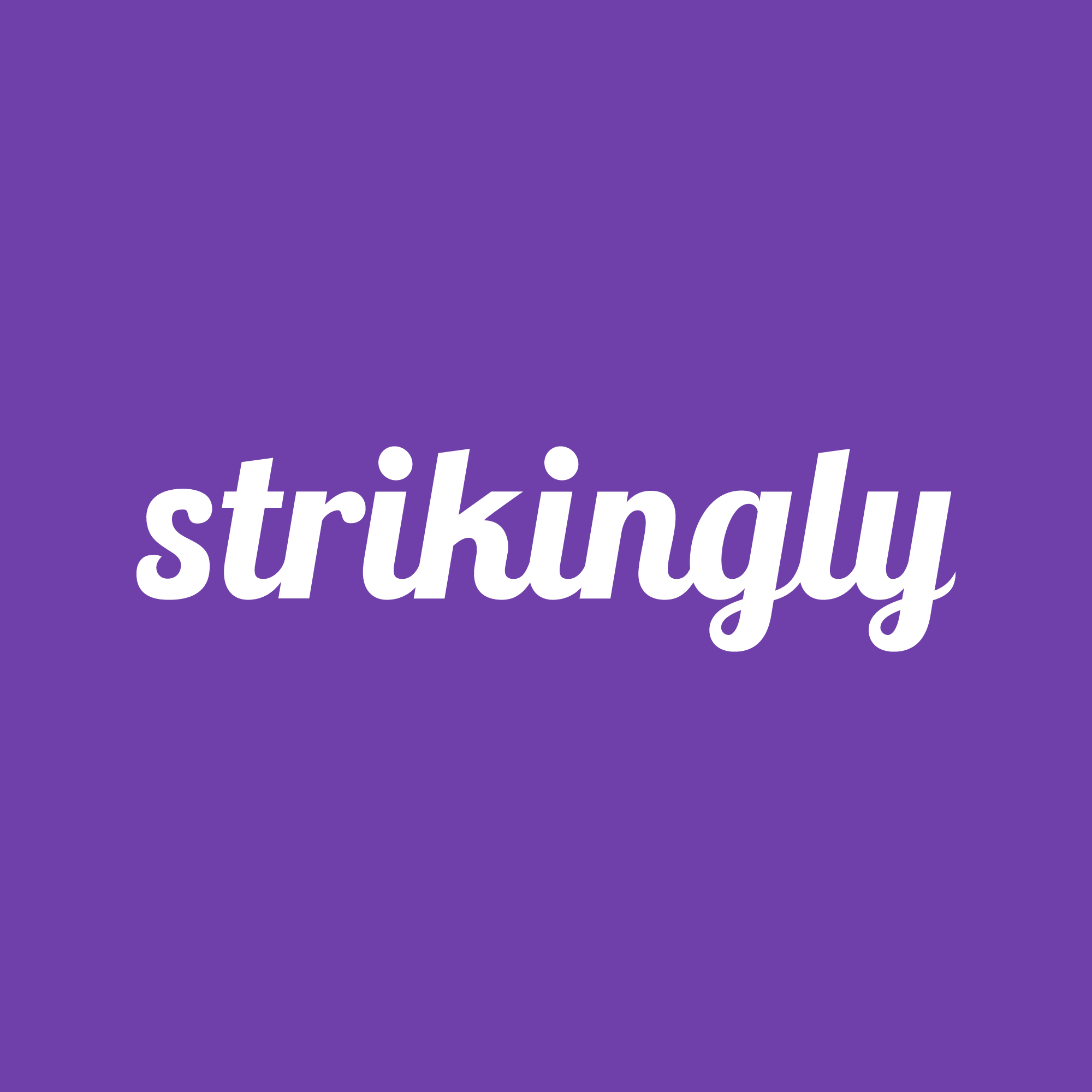The Best Free Website Builders of 2025


Table of Contents
Free website builders save you time and money if you have limited coding experience and are setting up a new company. ‘Free’ is a great word, but as with most things, it’s often short-lived.
The main downsides of free website builders are adverts on your site, limited storage space and locked third-party integrations. It’s also worth checking to see if the site builder comes with an SSL security certificate as it keeps customers’ data secure, demonstrates your ownership, and creates trust.
A free website builder can be hard to find, and it’s not without its headaches. Wondering where to start? We’ve gathered this year’s best free website builders that are easy to upgrade if needed. This guide will cover the main features alongside the best free tools to suit all your needs.
What Are The Best Free Website Builders?
You can check out our top seven picks of the best free website-building software below.
1. Wix

Best Overall

Wix is the top choice for companies of all sizes that want a flexible website builder packed with tools and customisable options.
Wix ADI (Artificial Design Intelligence) designs your website for you based on your answers. Want more input? Wix gives you excellent design control with over 500 beautiful templates to edit across 70 categories, or you can simply start from scratch in the editor. There’s the ability to add custom code, and the pages are mobile responsive too.
Wix Marketplace has over 300 apps for almost everything, although most are for a limited time and are on the paid plans alone. If you want to sell online, you’ll need to upgrade for more e-commerce features.
Key Features
Wix’s free plan includes:
- Wix editor: Drag and drop functionality responds intuitively and gives the creator choice.
- Free hosting, Wix domain, and SSL Certificate: Customise your free domain with your username in the ‘your site’ part. SSL certificate included.
- 500 MB of free cloud storage: Upload your content securely. Bandwidth is capped at 500 MB.
- Over 50 free-to-install apps: Choose from Google Drive, Wix Chat, Site Badges, and more.
Wix Pricing

Wix features eight pricing plans which you can pay monthly or annually. Each pricing tier increases in storage and features with fewer overall restrictions. The Combo tier is the cheapest plan at $16 a month; it removes Wix’s ads and gives you a custom domain. For online payments, you’ll need the Basic Business plan, which includes unlimited products at $27 a month.
2. GoDaddy

Best for Quick Launch

GoDaddy is the pop-up tent of website builders; it creates a site at speed. It has an ADI feature that builds your website based on two simple questions: the type of site and your site name. What’s more, SEO Wiz allows you to optimise it quickly, so you’re found more easily on Google.
Prefer building your site from the ground up? GoDaddy’s new editor, ‘Website + Marketing’, is the option for you. Though it’s not quite drag-and-drop, you can rearrange sections up and down, select from over 100 templates and preview your site on both mobile and desktop.
The interface is also user-friendly, saving you time to focus on other aspects of your business. It’s a solid pick all around.
Key Features
GoDaddy’s free plan includes:
- Free add-ons: Easy-to-use tools enable you to add and schedule appointments.
- Restore site history: Prefer an earlier design? The editor can access all of your previous versions.
- 24/7 phone and live chat support: The team is available, even if you’re not a customer.
- Free GoDaddy domain and hosting: A quick site setup. Although the branding remains on your pages unless you upgrade.
GoDaddy Pricing

GoDaddy has paid four tiers, and you can choose two-year, annually, or monthly. Each paid plan includes email, and the features increase per plan. The Basic tier removes adverts and gives you a custom domain for $16.99 per month. The Premium plan is the best choice for selling, and it includes 25,000 emails per month for $26.99. Just watch out for hidden fees.
3. Weebly
Best for Small Businesses

Weebly is ideal for small businesses. It provides an ample selection of free features to help guide, market, and manage your online presence, such as built-in SEO optimization.
The drag-and-drop editor is straightforward, and you can quickly move elements around the page. You can also change the code using CSS, HTML, or JavaScript for a more hands-on approach. However, there’s a limited number of templates; the free features help make up for this.
Weebly features an App Centre, which gives you access to over 70 free apps to boost your site’s traffic, social media and sales. There are over 200 apps that are also available as part of a premium upgrade.
Key Features
Weebly’s free plan includes:
- Free hosting and Weebly domain: You can get a free domain by selecting the Weebly subdomain.
- Chat, email and community forum: Ask other members, or chat to Weebly’s 24/7 customer service team on live chat or email.
- Shopping cart: Sell with a secure checkout on all devices.
- SSL Certificate: For boosting trust and giving you peace of mind.
Weebly Pricing

Weebly offers four paid tiers, and there’s a monthly or annual payment option. The Free plan has 17 features and is worth testing out. All the paid plans come with custom domains and enable you to sell digital goods. The Professional package is a solid choice at $16 monthly if you want unlimited storage and no adverts.
4. Sellfy

Best for Free Online Store

Sellfy makes selling all your physical and digital products effortless. Digital items can come in any format, such as video, music and PhotoShop (PSD) documents. POD (print-on-demand) is a built-in feature that automatically prints and ships goods like t-shirts, mugs and hoodies; all that’s needed is the design.
You can choose from multiple payment options like Stripe or PayPal for customer payment transactions, and there are no added transaction fees. You can feel safe in the knowledge that Sellfy is Payment Card Industry Data Security Standard certified (PCI-DSS), so data is kept secure.
Impressively, in the free plan, you can customise your storefront as you see fit with colours and layout options to match your company’s brand.
Key Features
Sellfy’s free plan includes:
- Sell: This option allows up to 10 physical or print-on-demands per month.
- Embed options: You can easily add the ‘Buy Now’ button and shopping cart if you already have a website.
- Support: There’s a 24/7 support team; type your query, and they’ll assist you.
- Free Sellfy Domain and SSL Certificate: This allows you to create your store using a subdomain.
Sellfy Pricing

Sellfy provides four main plans, and you can choose from monthly, yearly or two-year options. Every paid additional tier increases in features upon upgrading. However, if you want to remove Sellfy branding, it’s only available in the Business plan at $79 a month—the plan includes product upselling.
or check out our guide on The Best Platforms to Sell Digital Products.
5. Site123

Best for Simple Websites

Site123 is the go-to builder for personal websites that showcase your blog or online portfolio. It delivers on the basics with three steps to create a site: there’s a grid selection of website types, you name your site, and it then prompts you to create a free membership. That’s it.
Over 160 mobile-optimised templates are available if you desire a different layout. However, as the focus is simplicity, there’s a lack of customisable features, and you can’t add external code—
something to keep in mind.
The navigation bar includes everything in one place, with all the tabs located at the top, making editing quick and easy. If that’s what you need, look no further.
Key Features
Site123’s free plan includes:
- Free image library: Enhance your content with stock images and icons.
- Storage, bandwidth and domain: Both storage and bandwidth are capped at 250 MB, and you also get Site123’s subdomain.
- Unlimited pages and sites: Make as many pages as required, but they come with a branded ribbon unless you upgrade.
- 24/7 Support: The team are available to assist on live chat or email 24/7.
Site123 Pricing

Site123 has five paid plans, and all pricing options are only visible after signing up. The paid options come with more storage and features as the cost increases, but the free plan may be enough for some. If you want to remove branding and connect to a custom domain, the Premium plan is $12.80 a month.
6. Strikingly

Best for One-Page Websites

Strikingly lets you create stylish one-page websites and landing pages. A built-in analytics feature gives basic stats, such as the user’s device type and which countries your traffic comes from across different time frames.
The editor is an uncomplicated drag-and-drop builder with ready-made page sections. There are over 100 templates to choose from—which you can continually switch out—and they automatically reformat each time.
One point to consider: an SSL certificate isn’t included in the free plan. That said, it offers 5 GB of monthly broadband, 500 MB of storage per site and a Strikingly subdomain, which is still a great offer.
Key Features
Strikingly’s free plan includes:
- Unlimited one-page sites: Make as many as you want and without hassle.
- Sell through the Simple Store: You can sell one type of product with no restrictions on stock.
- Simple blogging features: Create a blog that includes analytics, an RSS feed, and comments.
- 24/7 Live Chat Support: Ask an expert or use Knowledge Base resources for self-help.
Strikingly Pricing

Strikingly offers three paid tiers and one freemium account. Every additional level delivers more advanced features, including an SSL certificate. The Pro plan removes ads and gives unlimited bandwidth at $20 monthly, but you can also pay yearly. If you want to test out any paid plan, there’s also a 14-day free trial.
7. Webflow

Best for Web Designers

Webflow is a playground for web designers and those that like heavy customisation. Be warned: this site builder doesn’t hold your hand. Instead of a drag-and-drop editor, Webflow’s visual editor allows you to control and customise everything using section blocks and white space. It’s like the PhotoShop of website builders with a CMS on top.
While there’s a steep learning curve, ‘Webflow University’ is a knowledge centre with over 400 free lessons covering everything from layout and typography to interactions and 3D transforms. It also has a community forum where you can ask questions.
However, it’s worth noting that you’ll need to upgrade to get an SSL certificate and remove Webflow’s branding, but this might not be an issue at first.
Key Features
Webflow’s free plan includes:
- Site editor: Over 40 free templates that you can edit. You’ll need a paid plan if you want to embed your code.
- Webflow subdomain and hosting: This allows you to publish two static pages, and there’s a limit of 1000 monthly visits.
- Customer email support: The team are available Monday-Friday to assist.
- Smooth navigation: Short keys and right-clicking are intuitive to remove or add elements.
Webflow Pricing

Webflow has 12 pricing tiers, split into two categories: Site plans and Account plans, which you can pay for monthly or annually. There are two freemium plans, Starter Workspace and Starter Siteplan, and they come with different perks. There’s undoubtedly a good deal of flexibility here.
The Best Free Website Builders for Small Businesses
Startups and small businesses usually begin with tight budgets and need free website builders to create a credible online presence and brand.
A key consideration is if the free website builder can scale up as your business grows and can accommodate your future needs. Webflow is robust for every stage and type of business, allowing you to create a free website relatively quickly, and there’s more capability when you need it.
Do you want to be able to sell products in the future? Sellfy is a great free option for a small e-commerce store, as it allows you to experiment with selling up to ten physical or POD items at first. From there, small businesses can upgrade as and when needed.
Free Website Builders Buyers Guide
What Are Free Website Builders?
‘Freemium’ is a business model that means you’ll get an account forever, as long as you don’t exceed your limits. Most website builders use this strategy as it allows you to test drive the product before you later decide to commit to an upgrade. Free website builders get the job done if you want a modern store, personal or business site.
As with any new venture, you’ll need to be dedicated and patient. The more you put in, the more you get out.
What Are the Limitations of Free Website Builders?
Each free website builder app listed in our guide comes with pros and cons. The core limitations are bandwidth, storage, adverts, and subdomains. Let’s take a closer look at each.
Bandwidth
Website bandwidth is the amount of information your site can transfer to your visitors in a given time frame. The amount of bandwidth, in essence, determines how fast your website can provide content to your users during peak times, the page loading speeds, and other critical resources.
Storage
Storage is the entire space on the server where you store files such as images, videos, and text. Cloud storage is one of the main types of storage offered, and the amount can vary from 250 MB – to 1 GB in free plans, which is undoubtedly restrictive if you want videos and high-quality content.
Site Branding
Adverts can vary in size; the subtler, the better. The branding can appear anywhere: at the top of your site, in the footer section, a pop-up, banner or slide-up ad. Of course, you can remove the adverts at a cost.
Domains and Subdomains
In all free plans, you’ll get a subdomain. It’ll most likely be a variation of this: yourname.Thewebsitebuildername.com/yoursite.
In the worst-case scenario it’ll be a mess of assigned letters and numbers with the website builder’s name attached. If you can buy a custom domain, your site will look more professional and reliable.
What To Look for In the Best Free Website Builders?
We’ve looked at the limitations, but what should you actively look for in the best free website builders? We’ve detailed the main areas below to help you arrive at the best for you.
Ease of Use
The end goal is to create stunning websites that attract your customers, but what about the actual making part? Drag-and-drop functionality allows you to select specific elements without breaking a sweat. Beginners to intermediate users should be able to design a site with only a little bit of learning, not a whole day.
Design And Customisation
Great templates look impressive and speed up the design process. But there’s a balance to be made—for example, you might want to embed your elements and customise them with code. It’s best to look for free site builders with various design tools inside the editor. If you’re restricted, you’ll feel frustrated.
App Integration
Being able to install apps and add-ons to your site is a must. Wix allows you to access the apps in its marketplace on the platform. Customisation choices such as social media apps, marketing tools, and payment gateway integrations are crucial for futureproofing your business.
Mobile Optimisation
It’s essential to have fast-loading and fully-optimized pages for multiple mobile devices. Without mobile optimization, you can damage your online reputation with customers and affect your Google SEO rank.
Free Website Builder FAQ
Here are some frequently asked questions below.
Q: Do I Need To Pay For Web Hosting?
The website builder includes free web hosting. However, providers can be sneaky by providing free hosting for only a year. Keep an eye out when they change their pricing plans.
Q: Will My Free Site Work On Different Screen Types?
Yes. As mobile and tablets become the most accessible viewing devices, web builders need to adapt. When you publish your website, there should be an option to preview it in mobile mode.
Q: Is It Easy To Upgrade My Website?
Yes. Scalability and futureproof options are a must-have, and our featured website builders such as Wix have both free plans and fairly inexpensive upgrades and more extensive scale plans to suit your needs. Check the pricing plans before you decide to make the change.
Also, it’s worth looking at the annual, two-year, and five-year options, as you’ll save more money long-term. You can also try out free trials with premium features—most of the builders on our list offer these.
Choosing The Best Free Website Builders
Free website builders enable you to build snappy and gorgeous sites to grow your business online.
Just be sure you’ve accounted for their ease of use, design features, app integration capabilities and mobile optimization. Overall, a free website builder is an excellent piece of kit; the sky’s the limit.
Here are the top 7 free website builder software:
- Wix – Best Overall
- GoDaddy – Best for Quick Launch
- Weebly – Best for Small Businesses
- Sellfy – Best for Free Online Store
- Site 123 – Best for Simple Websites
- Strikingly – Best for One-Page Websites
- Webflow – Best for Web Designers
Join the discussion in the comments section below by sharing your experiences using these website-building tools. Your suggestions are more than welcome.
Related Products





